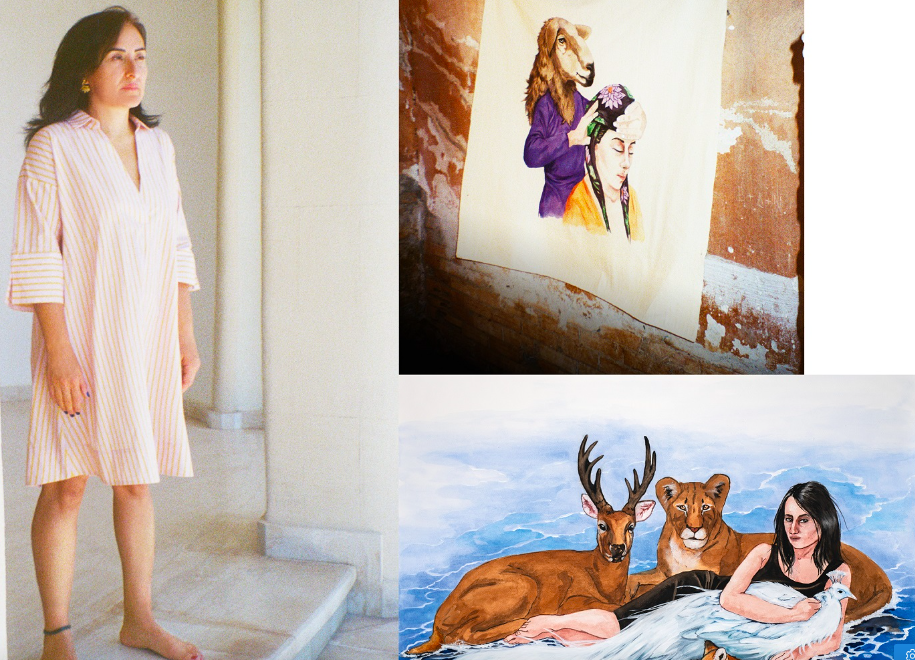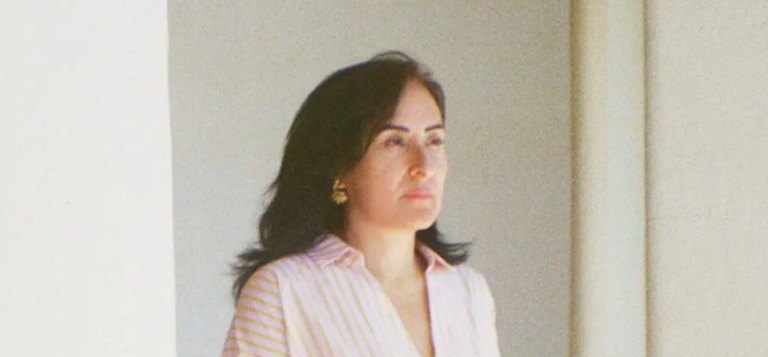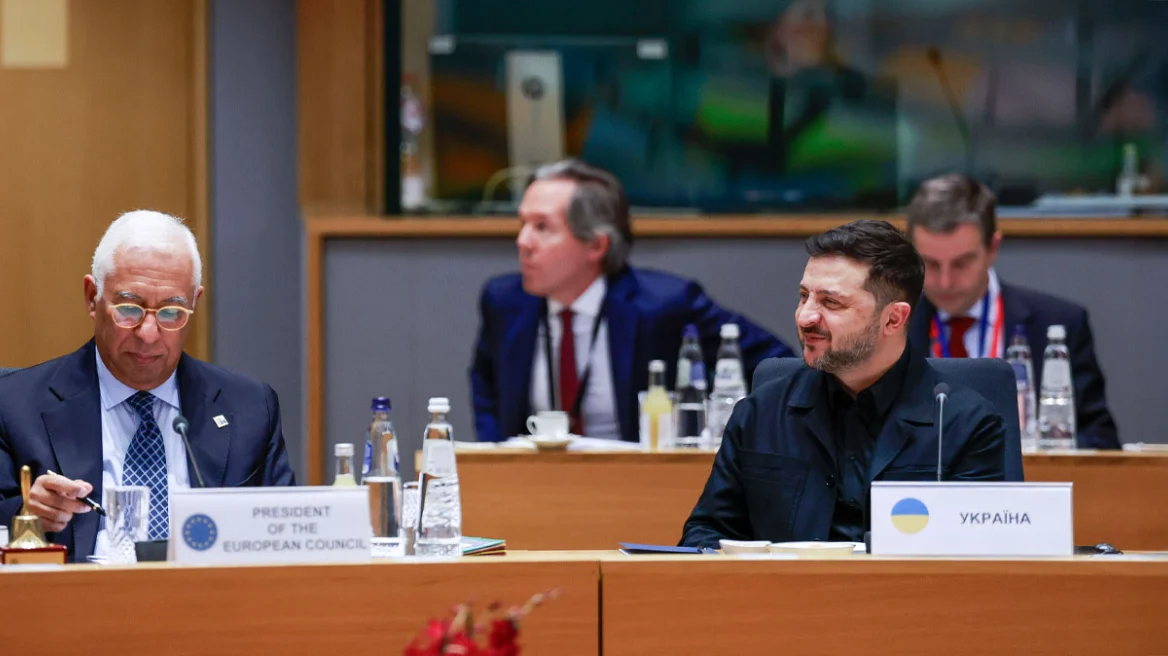Her paintings speak about love, beauty, violence, homosexuality, and what it means to be a woman in a patriarchal world. Through her works, she expresses reality with such immediacy that the subject touches the viewer with the power of an old myth, whose truth is immediately accepted. Necla Rüzgar’s works have recently been exhibited at the Akademie der Künste in Berlin and the National Museum of Contemporary Art in Bucharest. She teaches at Hacettepe University and in recent years has been represented by the Nev Gallery in Ankara. For the exhibition “All Things Become Islands Before My Senses,” organized by the artistic platform Perasma in Leros, with the participation of important Greek and foreign artists, Necla created several new works made specifically for the Dodecanese island.

In most of your paintings, people transform into swans, lions, birds, wolves, etc. Where did you get the inspiration for this?
“I think it has to do with my childhood. In the summers when I was young, I stayed in the village with my grandfather and grandmother. We had no electricity, no TV, magazines, newspapers, nothing. My grandfather told me many stories and fairy tales about animals and their relationships with humans. I think that is the primary seed that developed my imagination. For example, I had a goat that I called Gusar (earring) because her ear had something that looked like an earring. I created my own stories with this goat.”
Were your grandfather’s fairy tales frightening?
“My entire childhood was filled with scary stories. At night, I was afraid of almost everything because my mind was full of terrifying images (laughs). I think I carried them until I was 30 years old.”
Until you started painting them?
“Yes, you might be right.”
“In the summers when I was young, I stayed in the village with my grandfather and grandmother. We had no electricity, no TV, magazines, newspapers, nothing. My grandfather told me many stories and fairy tales about animals and their relationships with humans.”
Do you remember any of those stories?
“Once there was a king who went hunting with a falcon on his shoulder. When he got thirsty and went to drink water, the falcon stopped him. The king was surprised but said nothing and continued on his way. The next spring, the thirsty king bent down to drink water, but the falcon stopped him again. Then the king got angry and killed it. After continuing on his way and through various adventures, he realized the water was poisoned. The falcon had saved his life, and he had killed it… I think I learned what is good and what is bad, what is justice and what is ingratitude by essentially hearing these stories. Because fairy tales talk about humanity’s ideals, such as justice, but also about human foolishness. The problem was that in all the fairy tales, the man was always the good one, and the woman was always the problem. She was the villain.”
Is that why you paint these images? Are you trying to correct the injustice in fairy tales against women?
“Yes, I think all these stories have indeed inspired some of my paintings. We learned what female solidarity means relatively recently. Feminism may have started in the early 20th century, but the way women treated each other began to change about ten years ago. That’s when women discovered true friendship and that we are all sisters. For example, in the past, if your husband cheated on you, all the women would say it was because you weren’t good enough for him. Or that the other woman who took him was very evil. Now we understand each other better, protect each other, and fortunately, we react differently.”
“We learned what female solidarity means relatively recently. Feminism may have started in the early 20th century, but the way women treated each other began to change about ten years ago.”
Turgenev said that an artist must be completely honest and completely free. What is freedom for you?
“Freedom for me means being invisible. To be invisible means not having people around you who assign you specific roles. It means not having predefined expectations from you. Only then do you have the space needed to realize yourself. Only then can you train yourself according to your abilities and desires. For example, in a small town or conservative environment, everyone sees everyone. Each person is a witness, observer, memory, and judge of the other. When you are so visible, the range of your movement is limited, your way of life is restricted, and this prevents you from experimenting or even making mistakes.”
What is it like being a female artist in Turkey?
“Ten years ago, it was very difficult. Fortunately, that has changed. Perhaps because women create interesting art. Unlike men, who mostly create phallic images. In Türkiye, male artists hide their true feelings and create something acceptable. It’s like they are politicians. Women, however, use everything—from their vaginas to their blood—and try all kinds of different materials to express themselves. Still, men sell for higher prices than women just because they are men.”
“In Türkiye male artists hide their true feelings and create something acceptable. It’s like they are politicians. Women, however, use everything.”
What was the idea behind the new paintings and the ceramic you created for the exhibition in Leros?
“The main idea was to create the sense of an island. I imagined that a person is an island. There is a sea around us—always speaking metaphorically. And each person creates their values and morals on the island they are.”
Info
The exhibition “All Things Become Islands Before My Senses” at the E. Kandioglou residence in Agia Marina, Leros will run until August 31st.
Ask me anything
Explore related questions





